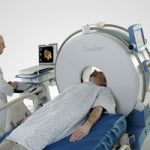I’ve written previously about how often imaging gets repeated once a trauma patient gets transferred to a trauma center (click here). There are many reasons, including clinical indications, need for advanced imaging (reconstructions), or lack of contrast. But at least 20% have to be repeated because the media is incompatible or not sent with the patient. Sounds like a problem, but is it a significant one?
A recent retrospective analysis of about 2,000 transfers to a Level I center looked at the reasons for repeat imaging and changes in outcome due to it. The paper found several interesting things:
- Repeat imaging was more likely in more severely injured patients
- Hospitals that transferred more patients to the trauma center tended to do more scans before transfer
- Patients who had repeat imaging stayed in the ED longer waiting for definitive disposition
- Repeat images did not improve outcomes (LOS, DC home, mortality)
- A rough estimate of $354 more in charges was attributed to repeat imaging
Bottom line: Repeat imaging is wasteful, expensive and increases time in the ED. And don’t forget about the radiation exposure. With all the emphasis on pushing hospitals to use an electronic medical record, there needs to be a similar push to standardize methods for transferring radiographic images between hospitals to address the problem of repeat imaging.
Related posts:
Reference: Repeat imaging in trauma transfers: A retrospective analysis of computed tomography scans repeated upon arrival to a Level I trauma center. J Trauma 72(5):1255-1262, 2012.

